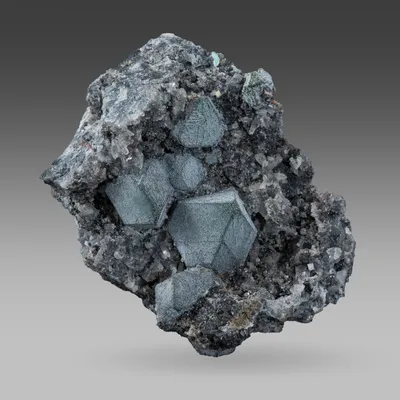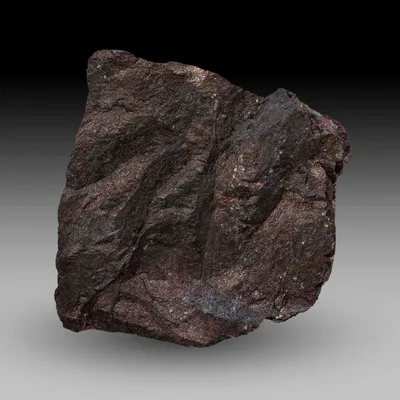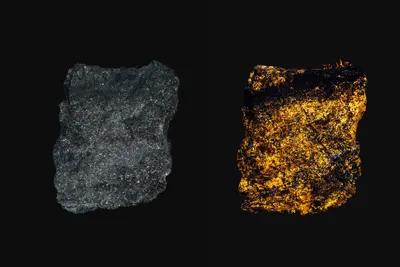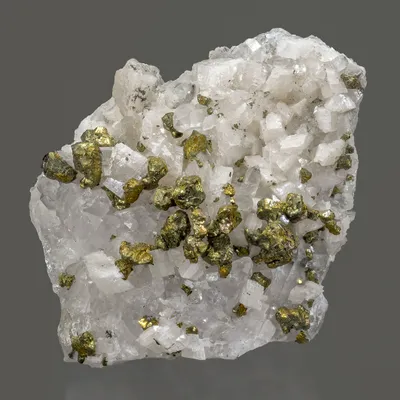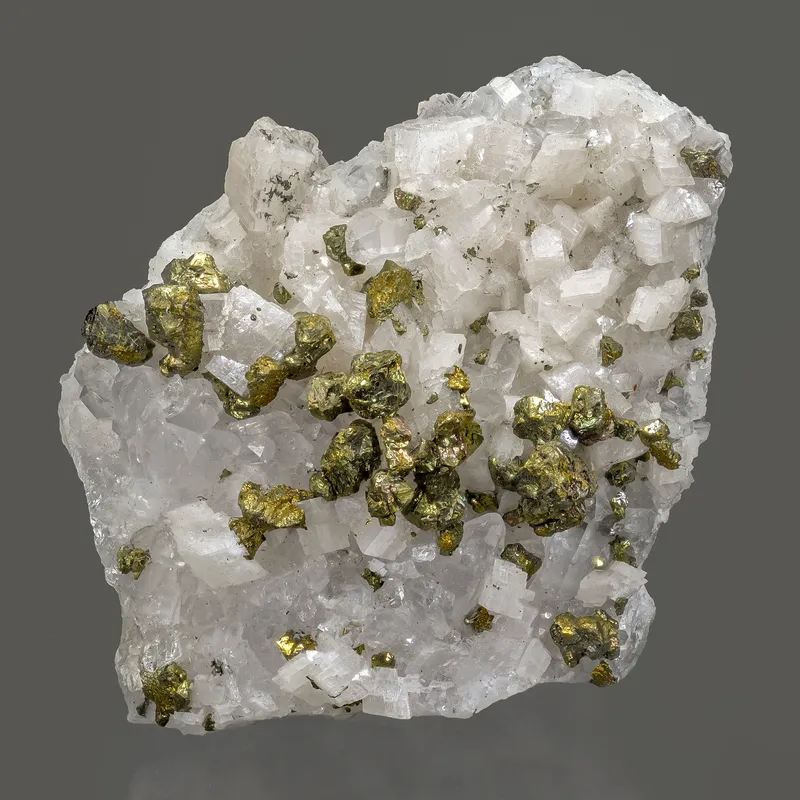
Image Credit: John Schneider
Mineral Species
Chalcopyrite
Type Locality
No
Composition
CuFeS2
Crystal System
Tetragonal
Status at Tsumeb
Confirmed
Abundance
Common
Distribution
Sulphide ores
Paragenesis
Hypogene
Entry Number
Species; TSNB79
General Notes
In contrast with many polymetallic base metal sulphide deposits, chalcopyrite is not the principal copper ore mineral at Tsumeb, being subordinate to tennantite, bornite, and chalcocite. This limited occurrence reflects the relatively iron-deficient nature of the Tsumeb mineralisation.
Nevertheless, chalcopyrite is widely, but sparsely, distributed throughout the sulphide ores of the Tsumeb deposit. For the most part, it occurs as microscopic grains and is visible only by reflected light microscopy (Hughes, 1987); specimen quality material is very rare.
Klein (1938) noted the presence of chalcopyrite in the upper levels of the mine and commented on its association with pyrite.
Strunz and Tennyson (1967) commented that chalcopyrite is very rare macroscopically and rare even under the ore microscope.
Keller (1984) described local occurrences of small chalcopyrite grains overgrown by germanite or renierite.
Haynes (1984/1985) studied phase relations in the Cu-Fe-As-S system and proposed a model involving the introduction of a single Cu-rich fluid into a host dolostone, resulting in changes in solution chemistry and a rising pH to develop the following sequence:
chalcopyrite >> bornite >> chalcocite >> enargite >> tennantite
Lombaard et al. (1986) identified two generations of chalcopyrite at Tsumeb, the first of which initiates a very early "Cu-Fe-Ge-(Zn)" phase of mineralisation and the second of which belongs to a later "Zn-Cu" stage.
Hughes (1987) suggested that "… it is probable that Cu2S phases, bornite, and possibly even chalcopyrite…have, in many instances been incorrectly assigned to the hypogene sulphide assemblage by previous workers." For example, Hughes interpreted replacements of bornite by intergrowths of chalcopyrite and covellite as supergene in origin.
According to Gebhard (1999) the only known crystals of chalcopyrite were found between 45 and 47 levels in the third oxidation zone. The tetrahedral crystals (to 10 mm) were associated with red sphalerite and tiny silvery tennantite crystals.
A specimen of chalcopyrite crystals with quartz and dolomite from the Pinch Collection is figured by Von Bezing et al. (2016; page 146) with brassy-yellow crystals and crystal aggregates of chalcopyrite (to c. 5 mm). The level of the mine from which this specimen was recovered is not recorded. The specimen is now in the collections at Harvard University (MGMH 2020.7.284) but, unfortunately, there is no information confirming its provenance.
Associated Minerals
albite; arthurite (?); bornite; chalcocite; covellite; digenite; dolomite; galena; germanite; germanocolusite; idaite (?); linnaeite (?); mawsonite; molybdenite; pyrite; quartz; renierite; sphalerite; stannite; tennantite-(Zn)



